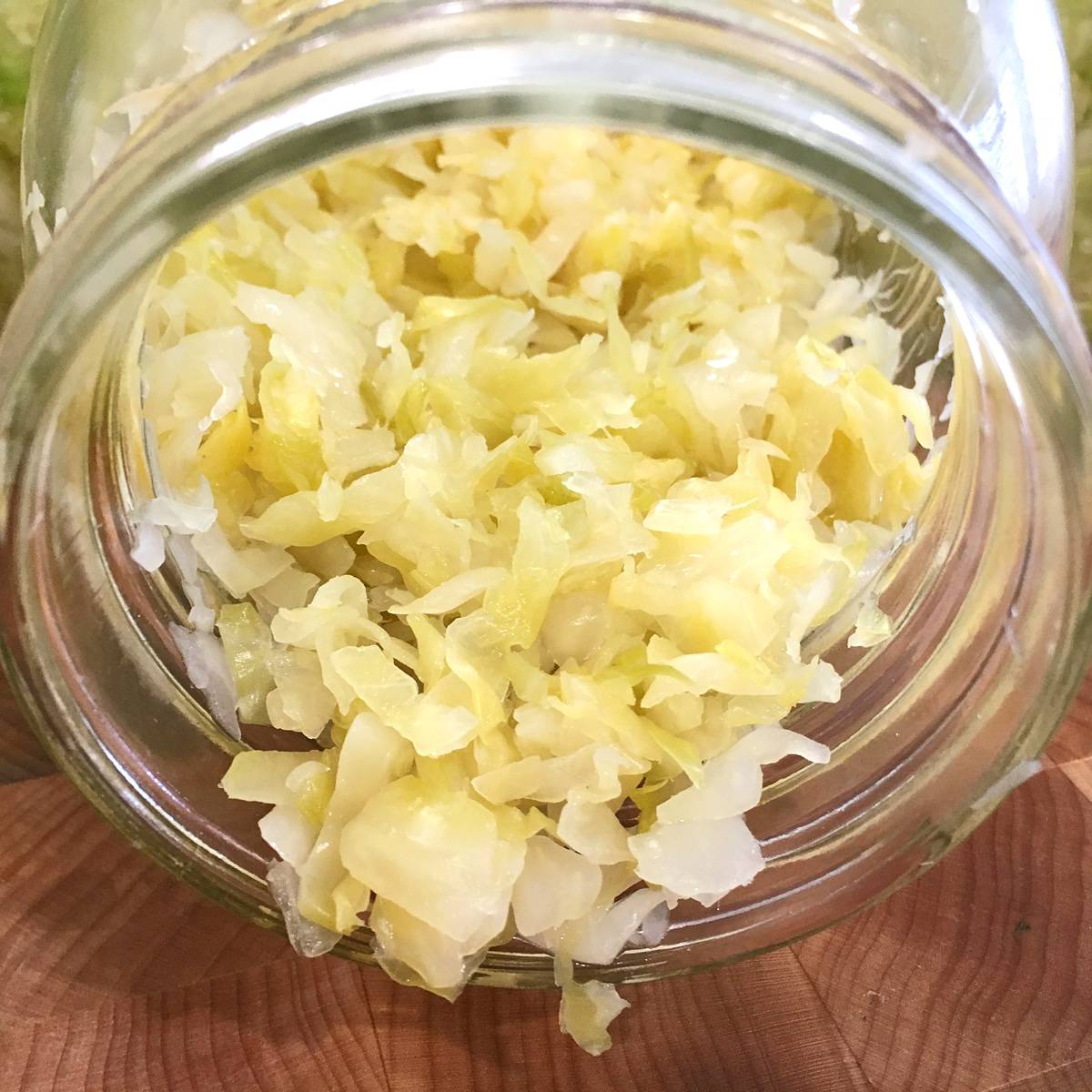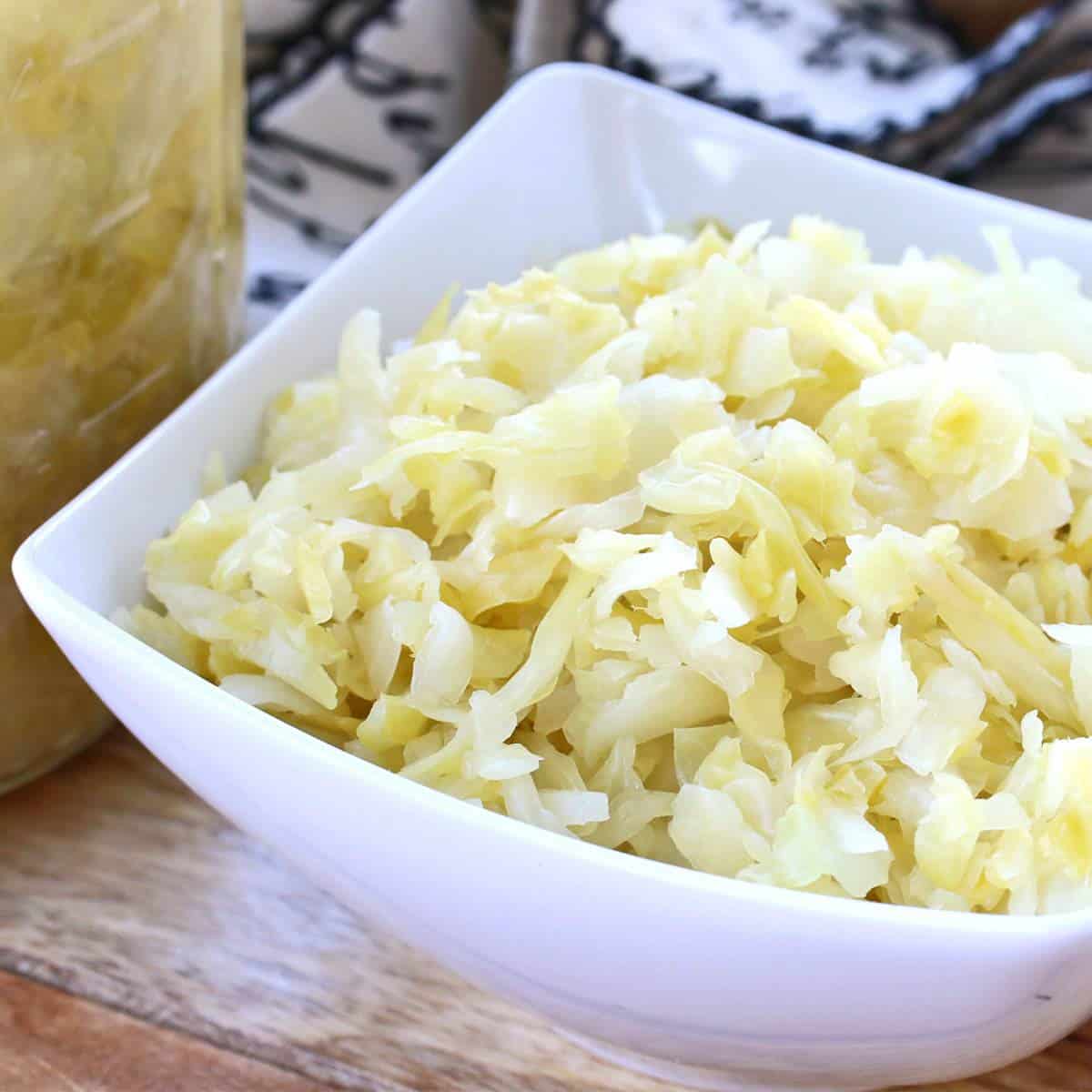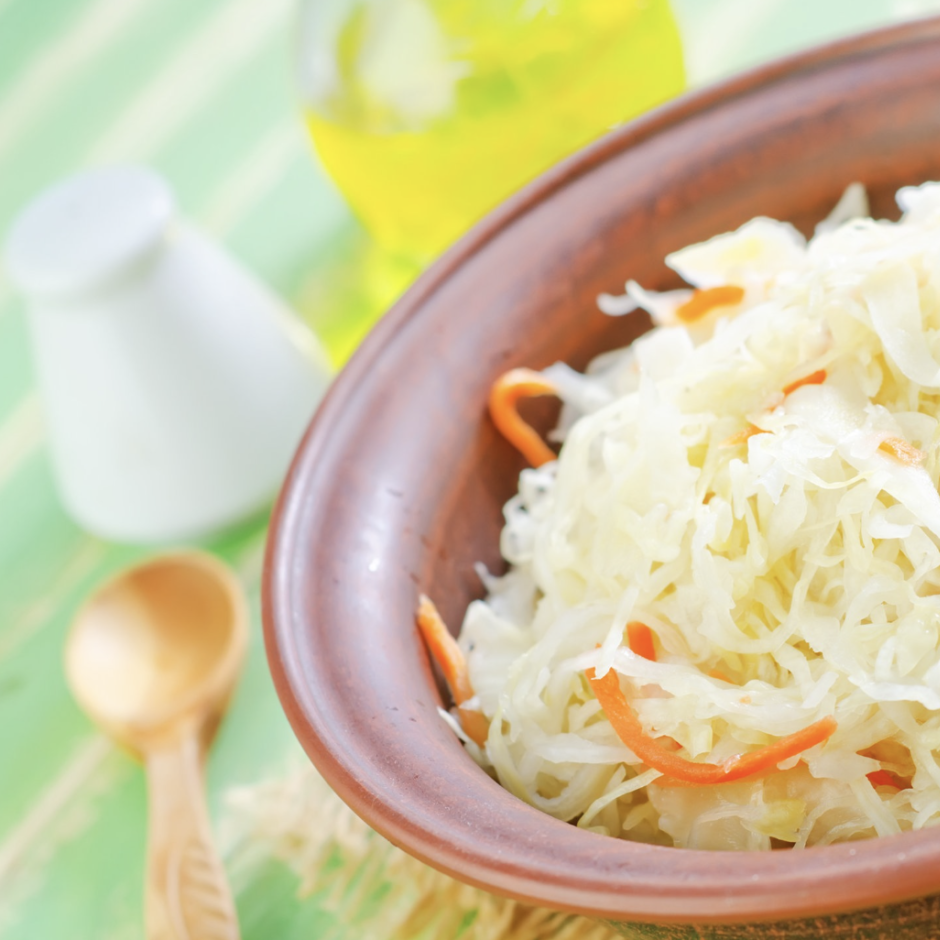Introduction to Sauerkraut and Its Shelf Life
Sauerkraut, a fermented cabbage dish, boasts a rich history. Its origin ties back to methods used before refrigeration technology. This dish is known for its extended shelf life due to fermentation. Fermentation naturally preserves the sauerkraut, allowing it to last longer than many unfermented foods. Precisely, how long sauerkraut lasts depends on several factors. These include whether it is pasteurized or unpasteurized, and how it is stored. Understanding these variables is key to maximizing its shelf life and ensuring quality.

Types of Sauerkraut: Pasteurized vs. Unpasteurized
When it comes to sauerkraut, there are two main types: pasteurized and unpasteurized.
Pasteurized Sauerkraut
Pasteurized sauerkraut undergoes heat treatment to kill bacteria and extend shelf life. This process gives it a longer shelf life but destroys beneficial bacteria and can affect texture and flavor.
Unpasteurized Sauerkraut
Unpasteurized, or raw, sauerkraut keeps the beneficial bacteria from fermentation. These probiotics can aid digestion. Raw sauerkraut needs refrigeration to maintain freshness and extend its fridge life.
Unpasteurized sauerkraut can typically last around 4-6 months in the refrigerator once opened. It is essential to use clean utensils to prevent contamination. Proper storage habits are crucial for maintaining the quality of both pasteurized and unpasteurized sauerkraut.
Storing Opened Sauerkraut: Refrigeration Best Practices
Proper refrigeration is key to maintaining the freshness of opened sauerkraut. To optimize the refrigerator conditions for opened sauerkraut, follow these best practices:
- Keep the Jar Sealed: Always ensure the sauerkraut jar is tightly sealed after each use. Exposure to air can accelerate spoilage.
- Maintain Ideal Temperature: Store your sauerkraut in a part of your refrigerator where the temperature is consistent. Aim for about 35 – 38 degrees Fahrenheit (1.7 – 3.3 degrees Celsius).
- Use Airtight Containers: If not in its original jar, transfer the sauerkraut to an airtight container. This will keep out moisture and contaminants.
- Keep It Submerged: Ensure that the sauerkraut is fully submerged in its juice. The liquid acts as a natural barrier to bacteria.
Following these tips will help extend the fridge life of your sauerkraut and preserve its quality and flavor.
Identifying Spoilage: Signs Your Sauerkraut Has Gone Bad
When storing sauerkraut, it’s crucial to keep an eye out for signs of spoilage. Learning how to identify when sauerkraut has gone bad can prevent consuming food that may be harmful. Here are the key indicators:
- Off-Odor: A strong, unpleasant smell is a telltale sign. Fresh sauerkraut has a tangy scent. Anything foul indicates spoilage.
- Change in Color: Look for changes in the sauerkraut’s normal color. Black, brown, or pink areas may mean it’s time to discard it.
- Texture Alteration: If the normally crunchy cabbage becomes slimy or overly soft, it’s likely spoiled.
- Taste Test: A small taste can alert you to spoilage. If the flavor is off, especially if it’s bitter or not sour, don’t eat it.
- Mold: Any visible mold is a clear indicator that the sauerkraut is no longer safe to consume.
- Swelling Container: A bulging can or jar lid suggests gas from bacterial activity and potential spoilage.
By keeping these signs in mind, you can ensure you enjoy your sauerkraut while it’s still good and discard it when necessary to avoid the risks of foodborne illness. Remember, when in doubt, throw it out to ensure safety.
Freezing Sauerkraut: Pros and Cons
Freezing sauerkraut offers an alternative method to extend its shelf life, but it comes with its own set of advantages and disadvantages.
Pros of Freezing Sauerkraut
- Extended Shelf Life: Freezing can significantly lengthen the time sauerkraut remains consumable, up to six to nine months.
- Convenience: Frozen sauerkraut is ready to use anytime, adding a layer of convenience.
- Maintains Texture: Proper freezing methods can help maintain the texture of sauerkraut relatively well.
Cons of Freezing Sauerkraut
- Loss of Probiotic Benefits: Freezing may reduce the levels of beneficial probiotics that aid digestion.
- Texture Changes: Although minimally, texture can still alter, sometimes resulting in a slightly softer product upon thawing.
- Flavor Alteration: Freezing might slightly change the flavor, making it less vibrant than fresh sauerkraut.
How to freeze sauerkraut effectively:
- Ensure the sauerkraut is well-drained before freezing.
- Pack it in airtight containers or heavy-duty freezer bags to prevent freezer burn.
- Label the packages with the freezing date to keep track of how long it has been stored.
By understanding these pros and cons, you can better decide if freezing is the right method for your sauerkraut storage needs. If you choose to freeze, follow the steps above to ensure optimal results.
 Shelf Life of Jarred Sauerkraut vs. Canned Sauerkraut
Shelf Life of Jarred Sauerkraut vs. Canned Sauerkraut
When choosing between jarred and canned sauerkraut, shelf life is an important factor. Jarred sauerkraut generally offers a longer post-opening shelf life compared to its canned counterpart. Here’s a comparison of both, including tips for optimal storage:
Jarred Sauerkraut Shelf Life
If stored correctly in the refrigerator, opened jarred sauerkraut can last up to six months. The sealing lid on jars helps maintain quality over time. When approaching the four-month mark, check for spoilage signs like bad odor, discoloration, or mold growth. Remember, always use clean utensils to avoid introducing contaminants.
Canned Sauerkraut Shelf Life
Once opened, canned sauerkraut tends to have a shorter fridge life, usually around 5 to 7 days. To maximize its life span, keep it in an airtight container, covered with its juice. Start checking for spoilage around day four.
When stored unopened, both jarred and canned sauerkraut have a long pantry shelf life. Ensure you check the best-before date for peak quality. Choose the type that best fits your consumption habits. Jarred sauerkraut is ideal for regular, small uses, while canned may be better for larger, single-use scenarios.
By keeping your sauerkraut well sealed and refrigerated, or opting to freeze for longer storage, you can extend its edible period well beyond its best-before date. Yet, no method is foolproof, so staying alert for any spoilage indicators is key to enjoying safe, tasty sauerkraut.
Tips for Prolonging Sauerkraut Freshness
Preserving the freshness of sauerkraut is simple if you know the right techniques. Here are some effective tips:
- Use Clean Utensils: Always use a clean fork or spoon to take out sauerkraut from the jar. This prevents bacteria from entering.
- Check Seal Integrity: Ensure the jar’s seal is tight after each use. A loose lid allows air in and spoils sauerkraut faster.
- Avoid Cross-Contamination: Don’t put used or dirty utensils back into the jar. Cross-contamination can introduce harmful bacteria.
- Control Portion Sizes: Take out only what you need. This reduces the time the sauerkraut is exposed to the air.
- Monitor for Freshness: Regularly check your sauerkraut for any signs of spoilage. If in doubt, throw it out.
By adhering to these simple guidelines, you can keep your sauerkraut fresh for longer periods. How long does sauerkraut last in the refrigerator? With these practices, you can potentially extend its fridge life significantly.
 Alternative Storage Methods: Cellar, Counter, and Canning Options
Alternative Storage Methods: Cellar, Counter, and Canning Options
When thinking about how long does sauerkraut last in the refrigerator, it’s useful to explore other storage options too. These alternatives can extend the life of your sauerkraut if you follow the right steps.
Using a Cellar for Storage
Using a cellar is a traditional method for storing sauerkraut. In a cool, dark cellar, sauerkraut can maintain quality for many months. The key is to keep temperatures consistent, ideally around 53 degrees Fahrenheit or lower. Place your sauerkraut jars on shelves and ensure they remain well-sealed.
Keeping Sauerkraut on the Counter
You can keep sauerkraut on the kitchen counter if you plan to consume it soon. Ensure the room is cool, with temperatures below 77 degrees Fahrenheit. On the counter, sauerkraut lasts about 1-2 months. However, this method has the shortest storage life compared to others.
Canning for Long-Term Preservation
Canning is a great way to store sauerkraut for years. The process involves sealing sauerkraut in jars and heating them to kill bacteria. This can be done using a boiling water canner. Make sure to leave some headspace and use sanitized jars for best results. Canned sauerkraut can last 2-3 years if stored in a cool, dark place.
Remember, no matter which method you choose, always look for signs of spoilage. Use clean utensils to avoid contamination. Keep an eye on temperatures, and maintain an airtight seal whatever storage option you pick.
